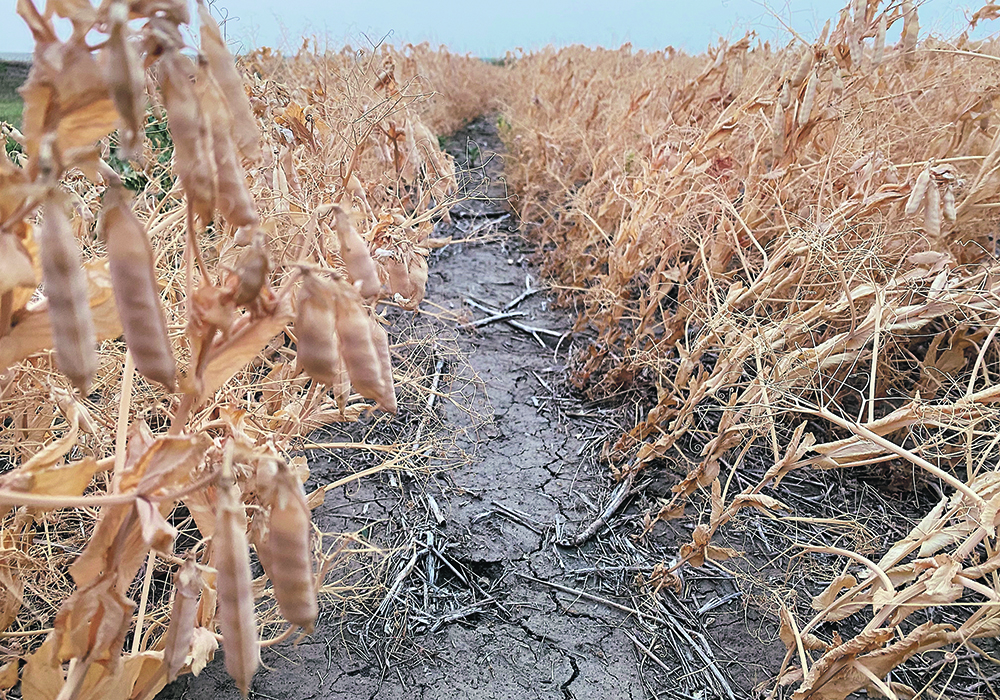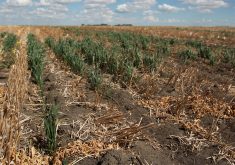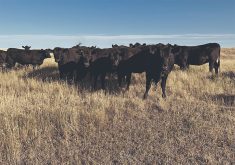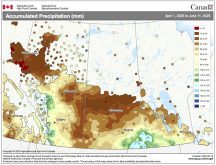Aphanomyces levels in Alberta pea and lentil crops plummeted last year because of the drought, but growers still need to be careful planting peas and lentils in fields with a history of the disease.
Robyne Bowness Davidson, pulse specialist at Lakeland College, said the only way to know how last year’s drought affected aphanomyces levels in Alberta fields is to wait to see how the disease responds during the next wet year.
“Even though we had a drought year and we don’t have a lot of data suggesting a lot of disease, oospores are still out there, guys,” Bowness Davidson said.
Read Also

U.S. bill could keep out Canadian truckers
The Protecting America’s Roads Act, which was tabled in the U.S. House of Representatives at the beginning of October, would “rid the country of illegal immigrant commercial truck drivers and ineligible foreign nationals.”
She provided a virtual presentation at the Alberta Agronomy Update Jan.12, where she said the threshold for infection of a prospective pulse field is about 100 oospores per gram of soil.
Oospores are the long-living resting spores in fields that can break dormancy when a host crop is present.
She said it’s common to have 1,000 or even up to 10,000 oospores in a field that has had high infection levels.
In fields with 1,000 oospores per gram of soil it takes five to six years for those oospores to drop below the threshold, where it’s unlikely to get disease levels that will cause big problems.
“If there’s 10,000 oospores, that can take up to seven or eight years. Now, of course that depends on soil conditions,” Bowness Davidson said.
“Unfortunately, in a drier year we get less microbial activity.… The oospores are not breaking down like maybe they wouldn’t in a better year. So right now, six to eight years is still the current recommendation.”
The resting oospores infect the plant’s roots directly and typically cause relatively low levels of infection in the crop.
The problematic part of the disease occurs when the oospores form sporangia that release mobile zoospores that can swim through saturated soils and follow chemical signals in root exudates of suitable host plants.
Soil moisture is critical for the zoospores to swim to host plants, which is largely why there were low levels of aphanomyces last summer.
Restrictions put in place at Agriculture Canada due to COVID-19 are still in place, and conducting aphanomyces surveys last summer was difficult for researchers.
There were fewer restrictions placed on researchers at Alberta Agriculture, so Michael Harding and his team were able to survey 115 fields, while researchers based at Lacombe and Vermillion examined an additional 30 fields.
“Of those 145 fields we found root rot in about 90 percent of those fields, so that means 90 percent of the fields that we walked into we found root rot somewhere,” Bowness Davidson said.
“Of those fields, 57 percent had symptoms. What that means is we went in and dug up 100 plants and of the 100 plants that we dug up, only 57, or just over half, actually had any kind of symptomatology.”
The average symptomatology that was observed had a severity of 2.3 out of six, which means the roots have some damage but for the most part looked decent and had lots of nodules that were fixing nitrogen.
However, it is still unknown what the actual level of aphanomyces is versus some of the other root rots, especially fusarium, which is a confounding factor for this disease.
“The only way to know for sure whether it’s aphanomyces versus some of the other pathogens in the DNA test,” Bowness Davidson said.
“There’s quite a backlog, due again to the regulations in the inability to get into our labs as much as we would like to get this work done.”
She said seed treatments are available for aphanomyces, but they offer only early season suppression and do not control the disease.
“If you have high levels of spores in your field or wet soils, these seed treatments are going to be able to do very little. That is because the aphanomyces is not a seedling disease, much like our other root rots,” Bowness Davidson said.
“Aphanomyces comes in four to six weeks later after the crop has come up. So, these tools are good, and we want to use them, but we cannot depend on them.”
She said seed treatments should be used in conjunction with all the other tools growers have to combat this disease.
“If you’re treating for the other root rots, if you’re seeding early, inoculating well, controlling your weeds, controlling your foliar, everything else that you can do to use good fields to make sure that these crops have an advantage — that and rotation, and some seed treatments to help a little, is the best management tools we have,” Bowness Davidson said.


















